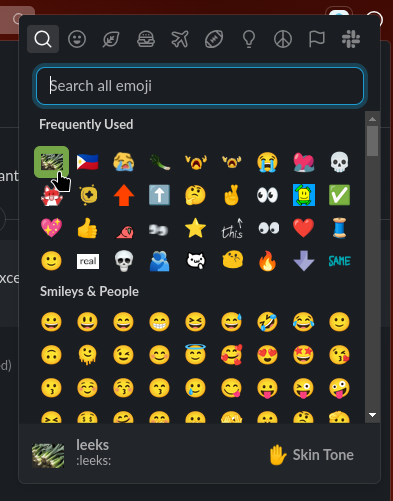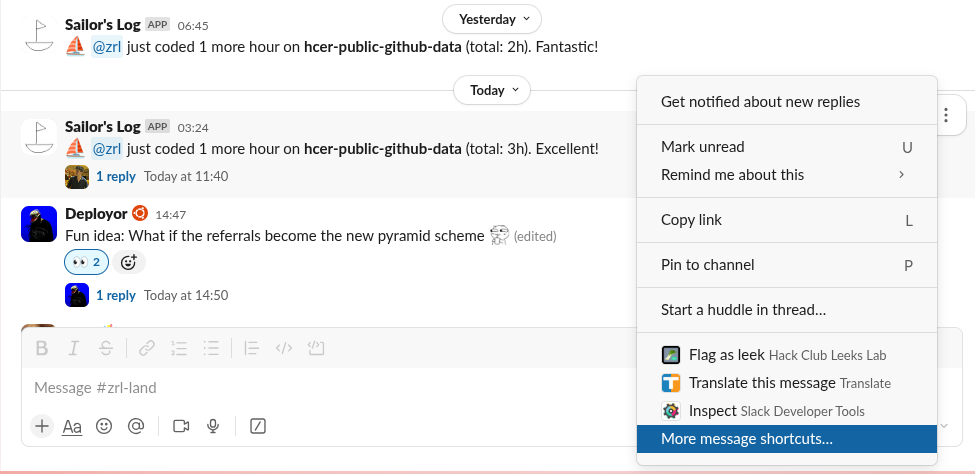Getting started
The main feature of the companion Slack app, flagging messages for possible leeks, uses both message reactions and message shortcut actions. For the demo screenshots, we use this message from the personal channel of ~zrl (founder and executive director, Hack Club)
Via message reactions
React with the :leek: or :leeks: custom emoji on any channel where the app currently resides.

If you need to, run /invite @leeksbot (Slack should automatically resolve that username to the production instance of the app for you) but it will be dequeued for being outside our list of approved channels unless reviewed by the reviewers in a private channel.
Via message shortcut actions
In any message, hover over the message on the desktop and click More actions or hold it on mobile to show the options menu then select More message shortcut

At the shortcut selector, search for Flag as leek from the Hack Club Leeks app (use the production one and not the development instance).

What happens behind the scenes?
The project maintainers, also known as Leeksbot Review Queue team on Slack, will be get notified in a private channel (#leeksbot-queue for context) whether there's being flagged as possible leek. All actions are logged using Slack threads with a Postgres database on Nest for recording keeping and showing status to everyone via /leeks status.

A reviewer may approve a flag either as minor or major leek, reject as non-leek or simply left alone/ignored. Any changes in status will result in the original flagger being notified via Slack DMs and updated at the database side.